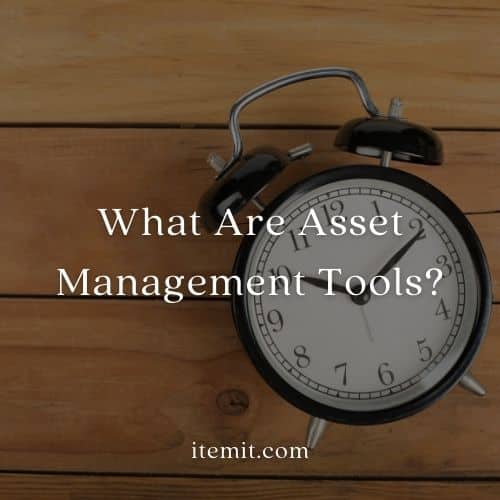Asset management helps your business save time and money. The ability to view, track, and manage your asset register with ease gives you more time to focus on other things.
Asset management tools can help with this automation, providing you with many helpful features and functions that make many of your existing operations simpler.
Maintenance, tools and equipment tracking, fixed asset management, accounting, and IT asset management can be simplified and improved by using asset management tools.

Here are just a few of the asset management tools at your disposal.
Asset Tagging Capabilities
Asset tagging gives you more automation. With asset tagging, you’ll be able to edit, find, and update asset information at a much greater speed, as well as automate many location tracking operations.
GPS Asset Tracking
GPS asset tracking gives you a high level of automation as it allows you to track your assets when they’d otherwise become unaccounted for.
With GPS asset tracking, the locations of your assets updates automatically. This means that you can track your tools and equipment while they’re off-site.
Assets are most likely to go missing when they’re moving. Therefore, when you use GPS tracking tools, you’ll be able to reduce your losses.
Fixed RFID Asset Management
Fixed RFID asset management is another way you can automate your location tracking capabilities. Where GPS asset tracking allows you to track your assets when they’re not on-site, fixed RFID asset management allows you to automate your on-site asset tracking.
Fixed RFID asset tracking uses RFID tags to update an asset’s location every time it moves between certain places. For example, if you’re looking for healthcare asset management, every time some medical equipment changes wards, this change will update automatically on your asset management software.
Barcodes, QR Code Asset Management, And Handheld RFID
The other, more standard asset tagging capabilities allow you to retrieve asset profiles and edit asset information with ease. All you need to do is scan an asset’s tag to retrieve an asset’s information, ready for editing.
This is the cheapest form of asset tagging tools but still allows you to improve, speed up, and solidify your operations.
Barcode, QR code and RFID asset tags will all function in the same way. All you need to do is link the unique tag to your asset, then you’ll be able to scan it in your asset tracking app to edit maintenance data or check an asset out, for example.
Asset Management Functionality
Once you’ve implemented asset tagging management tools, you’ll be able to make use of a wide variety of different asset management functions.
Tagging and tracking give you a much greater ability to monitor your assets, whether it’s how they’re moving or what their status is, but you’ll also be able to use a wide range of features that aren’t reliant on asset tags.
Some asset management tools at your disposal are:
- Automated fixed asset register creation
- Bespoke reporting features
- Auditing features
- Asset bookings and check-in check-out features
- Location tracking
- Reminders
- Issues management
- And many more!
To see all of the asset management tools that itemit can offer you, you’ll be able to book a demo using the button below.
Remember, with itemit you can mix and match your tracking capabilities meaning you’ll be able to use GPS tracking and RFID simultaneously! Find out more by contacting the team at team@itemit.com or by starting your 14-day free trial by filling in the form below.
Why not check out these blogs?
Why You Need IT Hardware Inventory Management
Benefit From Our Asset Management Tools
Start your free 14-day trial now
Instant access. No credit card details required.


